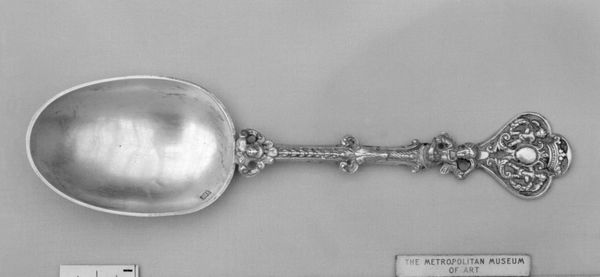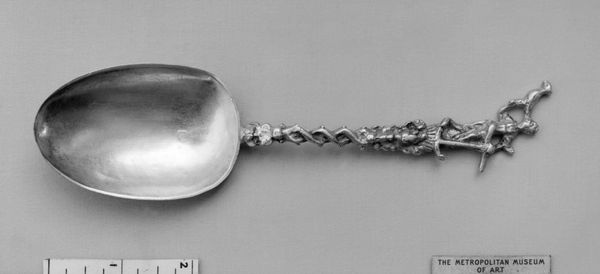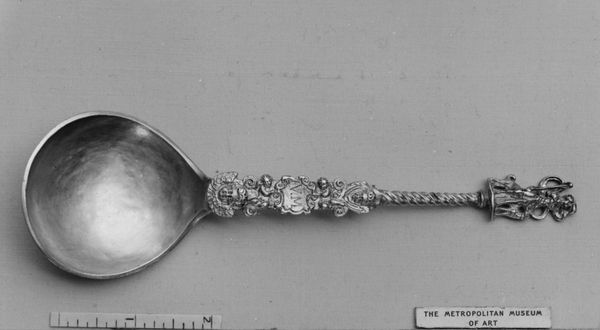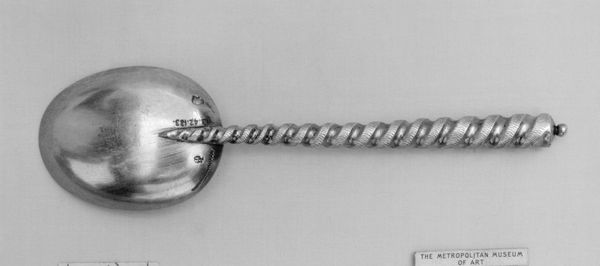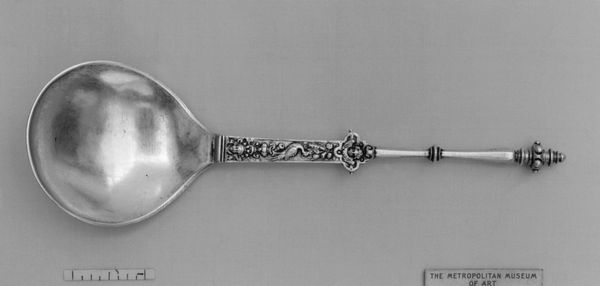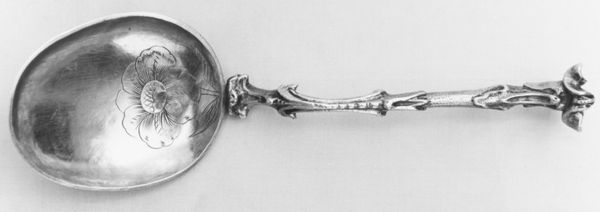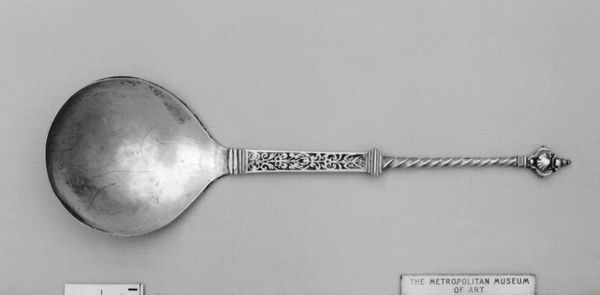
silver, metal, sculpture
#
silver
#
baroque
#
metal
#
sculpture
#
bird
#
sculpture
#
decorative-art
Dimensions: Overall: 6 3/4 × 1 7/8 in. (17.1 × 4.8 cm)
Copyright: Public Domain
Editor: So, this is a silver figure-top spoon, crafted between 1730 and 1765 by Paul Sierck, currently held in the Met. It’s remarkably ornate for something so utilitarian, wouldn't you say? I mean, look at the handle! What’s your read on this elaborate piece? Curator: Utilitarian? Maybe. Fantastical? Absolutely! Think of it less as just a spoon, and more as a mini baroque sculpture, born from the same world that birthed powdered wigs and ornate carriages. See how the twisting vine pattern practically writhes with energy? And that dragon-like finial at the end—doesn't it whisper tales of faraway lands and mythical creatures encountered after long journeys? I suspect it speaks volumes about the owner’s aspirations, too. Don't you wonder who stirred their tea with a dragon's tail? Editor: That’s a fantastic point. The handle really does transform it. But what about the anchor and crossed tools there by the dragon – does that reveal more about the spoon's owner? Curator: Exactly! Perhaps the anchor suggests someone connected to seafaring, trade or perhaps literally anchoring themselves in a new land, while the tools may relate to work ethic or perhaps the family’s trade? It is such beautiful piece to stir the imagination! Each element layered with possible meanings, all reflecting baroque aesthetic principles. Editor: It’s amazing how much symbolism they packed into a spoon! I wouldn't have picked up on all of that without your insights, though. Curator: And I, in turn, see it anew through your questioning eyes. Art is, after all, a conversation – a swirling cup of…well, perhaps not tea in this case! Soup perhaps? With a dragon's breath! Editor: A dragon's breath indeed! Thanks for your illuminating perspective, that will surely enhance visitor's experience.
Comments
No comments
Be the first to comment and join the conversation on the ultimate creative platform.
